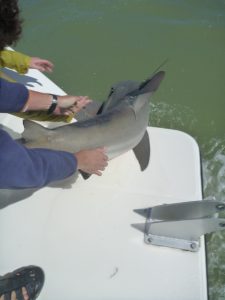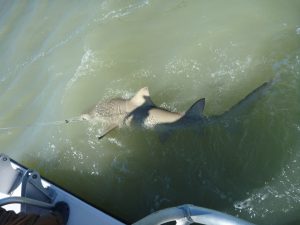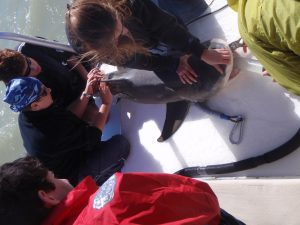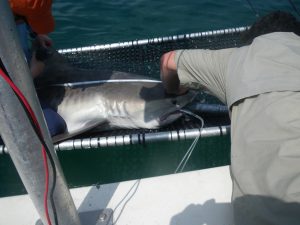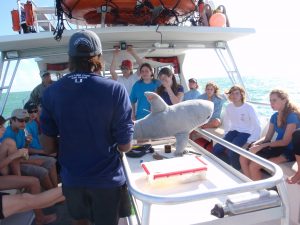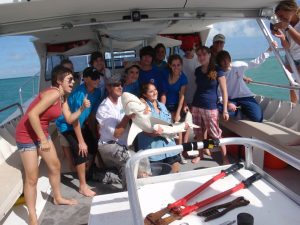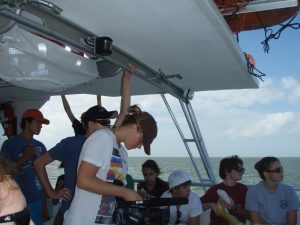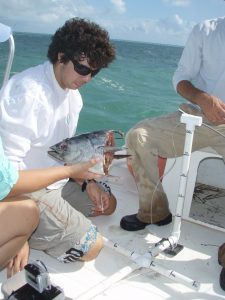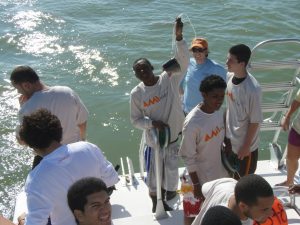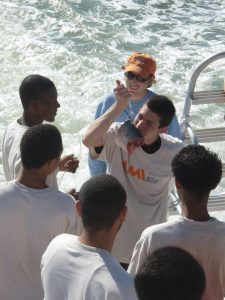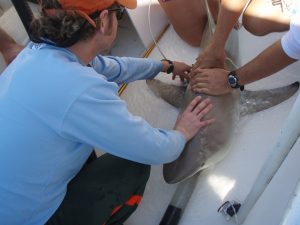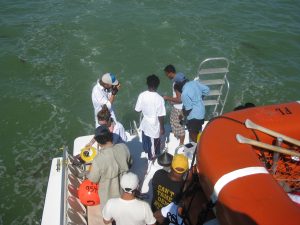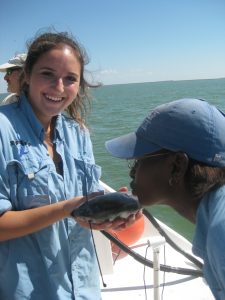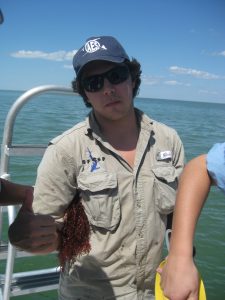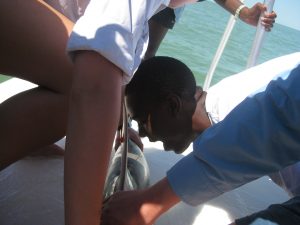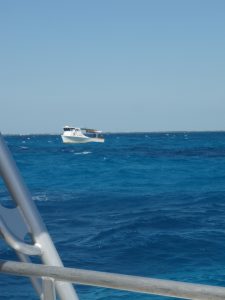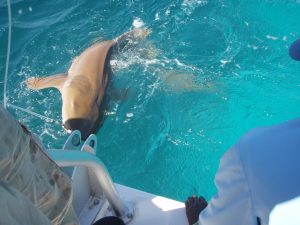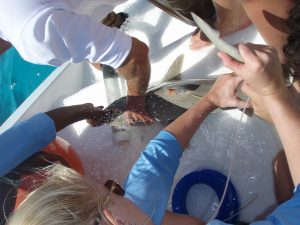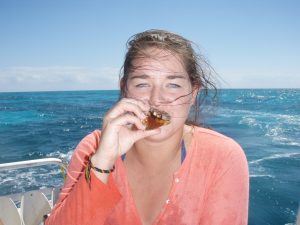“You’re the only ten I see…”
November 12, 2010
And so begins my last weekend on the water as an intern for the RJ Dunlap program…
After the previous week, when we sampled 25 sharks in just two days, expectations were high as we set out on the water this beautiful Friday morning. We headed to our outer reef spot. Depths here range from about 125-145 feet, which calls for additional rope to be added to our drumlines. Our usual set up consists of a circle hook on 70 feet of line attached by a hook timer and swivel to a 30-pound weight, with only 100 ft of rope connecting the buoy (that we use to relocate the weights after their deployment) and the weight. The swivel allows for sharks on the line to continue swimming. This is important because many of the sharks we catch around the Florida Keys are ram-ventilators, meaning they must keep swimming to pump water over their gills in order to breathe. The hook-timer is a device that pops to start a clock when something has pulled on the hook and thus can tell us how long a shark has been on the line. We put 3 sets of 10 drumlines out each day. I won’t make you do the math, but by the end of the day, we had pulled up 6,000 feet of rope. It’s a good thing we had a group of eager “locals” from Coral Shores High School on the boat with strong, young muscles to help with the task… in addition to collecting data from the sharks, of course.
After the first nine lines came up empty and therefore, quickly, we were glad to have the extra hands onboard. Who knew sampling sharks could replace a trip to the gym?!? Finally, on the 10th line we had a popped hook timer. Both students and RJD staff alike were thrilled to see a beautiful 1.8 meter female tiger shark on the end of the line. With quick work by Dr. Hammerschlag, Captain Curt and the rest of the team, we got the animal safely secured and placed a satellite tag on her dorsal fin.
After all necessary data was collected, the team released the shark in great condition, but she was not about to swim away from the boat without leaving us with a gift. As she was about to go back in the water she turned to face us and regurgitated a bit of bird feathers! This just goes to show sharks’ diets can be varied more than you would typically think.
Upon her release, the team decided to name this shark Tennessee after a suggestion from intern Ashley Schenk, who grew up in the state (you can track Tennessee and all our other satellite tagged sharks on the Learning Resources page). It was a fitting name for more than one reason: both interns onboard (Ashley and myself) have lived there, she was caught on drumline #ten and was tagged on the first birthday of a dear Tennessean friend of mine (Happy 1st Birthday, Emery!).
Following Tennessee’s release we pulled in 4,000 more feet of empty lines. Although it is a bit more exciting finding a toothy grin on a hook, no data is still data. With the rough state of shark populations today we are very lucky for each animal we are able to sample. And any day on the water that involves successfully deploying a satellite tag is a great day in my book.
One more day on the water for me! Thanks to Coral Shores for all the muscle power and to all of the RJD crew for a truly remarkable past 6 months!
Lots of sharky love,
Rachael, RJD Shark Intern

